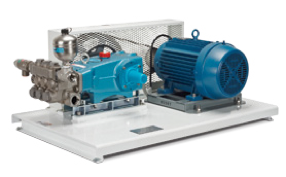Fog System Design Blunders: Part 2
Monday, April 24th, 2017
Part 2: Evaporative Cooling Effect
 In the second part of this series we explain the positive and negative impacts of evaporative cooling and why it should never be overlooked.
In the second part of this series we explain the positive and negative impacts of evaporative cooling and why it should never be overlooked.
When designing a fog system for a hot dry climate, the evaporative cooling effect is never ignored because it’s an integral part of the design. However, for areas that are typically humid in the summer but need to add humidity during the dry winter months, it can sometimes be an afterthought. If unaccounted for, you may find yourself fighting for control of the HVAC system.
Let’s start with the impact of adding humidity with fog inside of an AHU using an air-side economizer. On these systems, the evaporative cooling effect is almost always automatically offset by the economizer increasing the return air and decreasing the cold outside air. These applications are perfect for fogging and there is very little concern for control modifications and make-up heat. We covered this in further detail in our previous article “How to Humidify an Air-Side Economizer”.
However, when using 100% make-up air systems, you must pay careful attention to the evaporative cooling effect because it can be as much as 30°F delta T on a design winter day. Knowing this will allow you to properly size the preheat as well as integrate it into the HVAC sequence of operation.
As demand changes, the amount of cooling will vary as the humidifier modulates. Providing the proper control, which allows the preheat to offset these changes, is critical. Otherwise the air can be cooled too much which raises the relative humidity to the high limit set point in the AHU or duct. This causes the humidifier to stage down making it impossible to meet the desired room conditions.
What about fogging directly inside of a room to add humidity? This is typical for manufacturing facilities which have atomizing nozzles up near the ceiling using the wasted heat for evaporation of the fog droplets. This “in-space” system provides other benefits such as mixing the room air by creating a down draft, excellent for dust suppression, and free cooling. The evaporative cooling effect for this type of application is almost always beneficial because of the heat generated by the manufacturing process. So much so that they are often granted sizable rebates from the local utility for not using alternative methods that consume much more energy. Visit dsireusa.org for incentives available in your area. These also apply for HVAC fogging applications, not just manufacturing.
We’ve briefly covered a few of the many considerations for a properly engineered fog system and what hasn’t been covered could fill a book. No need to worry though, GoFog will walk you through the entire process and provide everything you need to make the correct design and selection.
